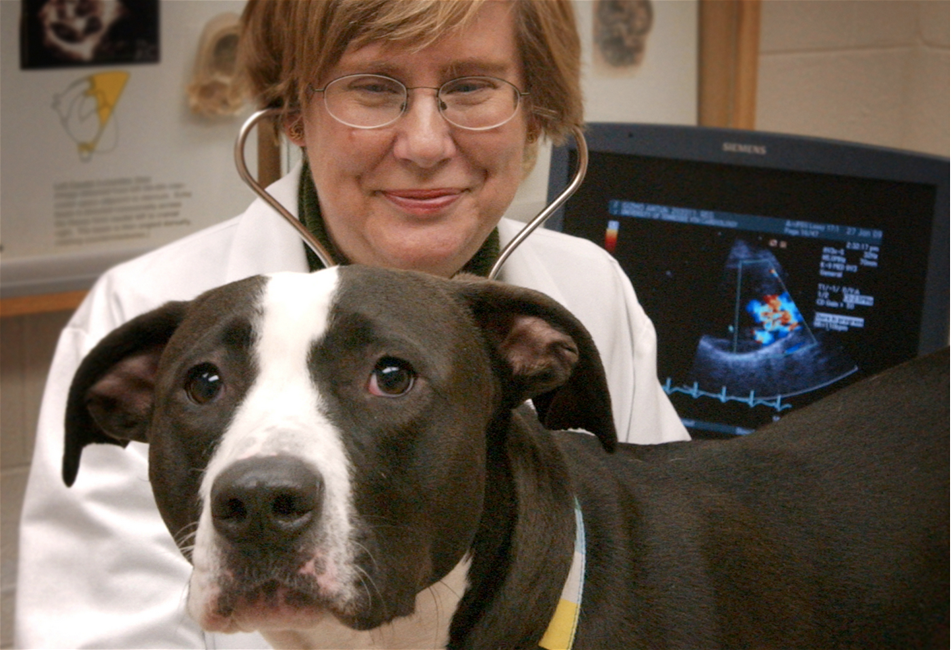How a Cancer Veterinary Near Me Offers Comprehensive Oncology Services for Pets}
The Function of Ultrasound and CT Scan in Modern Veterinary Practices: Insights From Experienced Professionals
In contemporary veterinary techniques, ultrasound and CT scans substantially boost diagnostic capabilities. These imaging techniques provide important insights into animal wellness, assisting therapy decisions. Experienced experts recognize the special advantages of each method. Ultrasound uses real-time evaluations, while CT scans deliver detailed physiological information. Comprehending their functions and applications raises important questions concerning their influence on person results and the future of veterinary diagnostics. What understandings can be obtained from their combined usage?
Comprehending Ultrasound in Veterinary Medicine
Ultrasound is an important analysis device in vet medication, supplying a non-invasive method to envision internal frameworks. This imaging method employs high-frequency sound waves to create real-time photos of organs and cells, permitting veterinarians to analyze problems without surgical intervention. Common applications consist of reviewing the heart, liver, kidneys, and reproductive body organs, in addition to checking pregnancies.The treatment is relatively fast and can be done in different settings, making it an available alternative for vets. Unlike radiography, ultrasound supplies in-depth info concerning soft tissues and blood circulation, which is essential for accurate diagnoses.Veterinary professionals depend on ultrasound to identify problems such as tumors, cysts, and fluid accumulation. Its capacity to lead biopsies and other procedures even more enhances its utility in professional method. By providing a effective and secure method to take a look at interior anatomy, ultrasound has actually ended up being a foundation of modern vet diagnostics.
The Benefits of CT Checks for Animal Diagnostics
CT checks offer significant benefits in veterinary diagnostics by giving improved precision in recognizing internal problems (CT Scans For Animals). As a non-invasive imaging method, they guarantee the safety and security and comfort of pets throughout assessments. Furthermore, CT scans facilitate a thorough evaluation of internal frameworks, permitting extra effective treatment preparation
Enhanced Diagnostic Accuracy
Improvements in imaging modern technology have significantly boosted analysis precision in veterinary medicine, particularly via using CT scans. These scans offer thorough cross-sectional photos of an animal's inner structures, enabling vets to recognize problems with accuracy. The high resolution and three-dimensional capabilities of CT imaging help with the detection of problems such as lumps, fractures, and internal bleeding that may be missed out on with conventional imaging techniques. Additionally, CT scans can assist in pre-surgical preparation by providing a thorough view of anatomical partnerships. This degree of detail not only improves the accuracy of diagnoses yet also aids in customizing reliable therapy strategies. Subsequently, the combination of CT modern technology right into vet techniques is changing the landscape of pet medical care, improving outcomes for people.
Non-Invasive Imaging Strategy
The introduction of non-invasive imaging methods has transformed pet diagnostics, with CT scans arising as a noticeable device in veterinary practices. These scans supply high-resolution, cross-sectional pictures of an animal's internal structures, enabling veterinarians to examine intricate problems without the requirement for invasive treatments. The advantages of CT scans include their capability to discover lumps, fractures, and internal bleeding with impressive precision. In addition, they help with the assessment of soft tissues and body organs, improving diagnostic capacities. The rate of CT scanning enables fast decision-making, which is essential in emergency situation situations. By minimizing stress and anxiety and pain for the animal, CT scans add to a more humane method to diagnostics, ultimately boosting treatment outcomes and progressing veterinary treatment.
Comprehensive Internal Analysis
A thorough inner analysis is important for precise medical diagnosis and reliable treatment in veterinary medicine. CT checks deal significant benefits hereof, supplying comprehensive cross-sectional photos of a pet's internal structures. This sophisticated imaging technique improves visualization of complex physiological areas, allowing vets to recognize problems such as growths, fractures, and inner bleeding with higher precision. Additionally, CT checks facilitate the assessment of conditions that may be testing to diagnose through conventional techniques. The rate and accuracy of CT imaging likewise add to prompt treatments, boosting client results. As vet methods significantly incorporate CT technology, the benefits of considerable interior assessments end up being obvious, strengthening the importance of this device in contemporary veterinary diagnostics.
Contrasting Ultrasound and CT Imaging Techniques
While both ultrasound and CT imaging offer crucial duties in veterinary diagnostics, each strategy supplies unique benefits and limitations that can affect scientific decision-making. Ultrasound is especially valued for its real-time imaging capabilities, allowing vets to observe dynamic physical processes. This technique is non-invasive, portable, and does not entail ionizing radiation, making it a much safer option for both animals and medical professionals. Ultrasound might have restrictions in imagining specific anatomical structures about his or deep tissues.Conversely, CT imaging gives detailed cross-sectional views of the body, enabling for exact localization of abnormalities. It excels in examining facility organs and structures, particularly in the thorax and abdominal area. CT scans require sedation or anesthesia in numerous cases and entail direct exposure to ionizing radiation. Ultimately, the selection in between ultrasound and CT relies on the details medical situation, the area of interest, and the seriousness of the diagnostic requirements.
Situation Researches: Successful Diagnoses Through Imaging
Instance research studies highlight the considerable improvements in analysis accuracy attained with innovative imaging innovations like ultrasound and CT scans in veterinary practices. These improvements not just improve the detection of numerous conditions however additionally help with prompt and efficient treatment plans. Assessing certain instances can highlight the transformative effect of these imaging strategies on vet medicine.
Diagnostic Precision Improvements

Imaging Modern Technology Advancements
As vet imaging technology continues to advance, its influence on diagnostic capabilities comes to be significantly noticeable. Current study highlight the successful application of innovative ultrasound and CT check techniques in determining intricate conditions. For example, a veterinary facility used high-resolution CT scans to detect a rare type of lung cancer in a dog, which standard imaging had actually missed out on. An ultrasound assessment disclosed a stomach mass in a pet cat, prompting prompt medical intervention and a favorable end result. These advancements not only boost diagnostic accuracy but additionally make it possible for vets to devise targeted therapy strategies. By leveraging cutting-edge imaging innovations, vet specialists are substantially improving client treatment, resulting in much more effective management of numerous health problems in animals.
The Role of Imaging in Emergency Vet Care
Imaging plays a vital duty in emergency situation vet care, giving veterinarians with crucial details required to make rapid, enlightened choices. In urgent circumstances, strategies like ultrasound and CT scans make it possible for professionals to quickly evaluate a pet dog's interior structures, determining crucial conditions such as internal blood loss, fractures, or body organ problems. These imaging modalities permit real-time assessments, helping with timely treatments that can be life-saving. For example, ultrasound is invaluable for assessing soft tissue injuries and conditions like liquid build-up, while CT scans offer comprehensive images of intricate physiological frameworks, important for detecting injury cases. The speed and accuracy of these imaging techniques boost the vet's ability to develop effective therapy strategies, guaranteeing the most effective feasible results for their clients. The assimilation of sophisticated imaging innovations right into emergency situation vet methods is not just useful yet increasingly essential, as it improves diagnostic capabilities and enhances total animal treatment during essential moments.

Training and Experience in Veterinary Imaging
Innovative imaging strategies such as ultrasound and CT scans are crucial for reliable veterinary care, the successful implementation of these innovations greatly depends on the training and knowledge of veterinary professionals. Skillful usage of imaging devices calls for detailed understanding of composition, pathology, and the concepts underlying each modality. Vet specialists have to undergo customized training to accurately analyze imaging outcomes, which is important for diagnosing conditions and preparing treatment.Certifications and continuing education in vet imaging enhance the abilities of experts, allowing them to remain updated with technological improvements. Collaboration between radiologists and veterinarians often results in improved analysis precision, as specialists can offer insights right into complex have a peek at this website situations. Additionally, useful experience in dealing with imaging devices cultivates self-confidence in its application. Ultimately, the high quality of vet imaging services is directly correlated to the level of training and competence had by the professionals making use of these crucial analysis devices.
Future Patterns in Diagnostic Imaging for Animals
With the fast innovations in technology, veterinary diagnostic imaging is poised for significant advancement in the coming years. Arising trends show a change in the direction of more obtainable and portable imaging methods, such as handheld ultrasound gadgets, which can improve field diagnostics. In addition, the combination of fabricated knowledge is anticipated to reinvent image analysis, permitting quicker and more precise interpretations of results.Moreover, advancements in 3D imaging methods and calculated tomography will certainly provide vets with even more complete views of pet composition, causing better therapy plans. Virtual reality modern technology may also play a function in medical planning and education, giving veterinarians a special perspective on intricate cases.As telemedicine remains to expand, remote appointments promoted by diagnostic imaging will end up being much more typical, enabling experts to assist family doctors in real-time. On the whole, these trends are set to improve the performance and performance of vet care, eventually improving pet outcomes.
Often Asked Questions
Exactly How Much Do Ultrasound and CT Scans Price in Vet Clinics?
The expenses of ultrasound and CT scans in veterinary clinics normally range from $300 to $1,500, relying on aspects such as place, clinic kind, and details procedures required for the pet's medical diagnosis and treatment.

Exist Any Type Of Risks Related To Ultrasound and CT Scans for Pets?
Ultrasound and CT scans generally posture marginal risks to animals. Nonetheless, potential problems include sedation reactions and exposure to anesthetics. CT Scans For Dogs. Veterinarians meticulously evaluate each situation to alleviate any kind of dangers connected with these diagnostic treatments
How Much Time Do Ultrasound and CT Procedures Commonly Take?
Ultrasound procedures typically take about 30 minutes to an hour, relying on the complexity. CT scans, being even more comprehensive, typically call for 30 minutes to 90 minutes, consisting of preparation and recuperation time for the pet dog.
Can All Veterinarians Perform Ultrasounds and CT Scans?
Not all vets can execute ultrasounds and CT scans. Specialized training and certification are usually called for to assure competency in these innovative imaging strategies, which might restrict their availability to veterinarians with additional certifications and resources.
What Kinds Of Animals Profit Many From These Imaging Techniques?
Particular pet species, particularly pets and cats, benefit greatly from ultrasound and CT scans. These imaging methods enhance diagnostic accuracy for problems like lumps, internal injuries, and organ irregularities, bring about improved therapy results and individual care. The high resolution and three-dimensional abilities of CT imaging assist in the discovery of conditions such as growths, cracks, and inner bleeding that might be missed out on with traditional imaging techniques. Instance studies highlight the significant renovations in analysis precision accomplished with innovative imaging modern technologies like ultrasound and CT scans in veterinary methods. Improving diagnostic accuracy in veterinary methods has actually been significantly aided by innovations in imaging innovations such as ultrasound and CT scans. Innovative imaging methods such as ultrasound and CT scans are vital for reliable veterinary treatment, the effective execution of these innovations heavily depends on the training and competence of veterinary experts. Vet specialists need to go through customized training to properly analyze imaging outcomes, which is essential for identifying problems and intending treatment.Certifications and proceeding education and learning in vet imaging enhance the abilities of professionals, enabling them to stay updated with technological innovations.